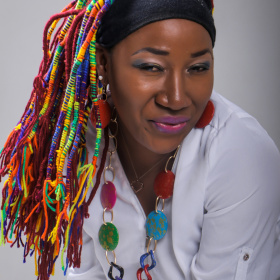Zeze African Music Instrument
Bio
Commonly known as Izeze or Endingid, Zeze is an African music instrument that was played with a bow, a small wooden stick, or plucked with the fingers. The object was collected in the 1930's and is currently held at Bo La Motte Farm Cottages, Franschhoek in South Africa. It then found its way to the collection of Joan Hoather, the owner of Gainsboraugh Galleries at the Carlton Centre in Johannesburg, South Africa. Joan Hoather bequeathed this and other early collected objects to her friend Mrs M. Olivier.
Some researchers said the Zeze was played during rituals and festivities, as well as to accompany the songs sung in praise of leaders. It is found among the peoples living nearest to the coast. It can be plucked or struck, though few people know how to play it, perhaps because of its rarity.
In some areas the neck end can be beautifully carved in different shapes. In music competitions like Shinyanga and Ukerewe, the beauty of the instrument is taken into consideration, since listeners are attracted not only by good playing, but also by the unusual shaping of the instruments as well as the special dress of the musicians.
The Zeze fiddle is adorned with a female finial. It was played with a resonator, most likely a calabash. It is 66cm tall and reveals an old deep set patina. The lead or aluminum inlayed eyes are not uncommon in early collected East African figurative sculpture; however the addition of inlayed teeth with a single nose plug is unheard of.
In other places in the near eastern origin, the instrument is played by striking it with a short bow. It is usually played by professional traveling musicians who go from village to village to perform at ceremonies. These instruments are found mainly among the people living near the coast such as the Doë and Kwere, but the Zaramo, Kaguru, and Luguru also have a few examples.


















